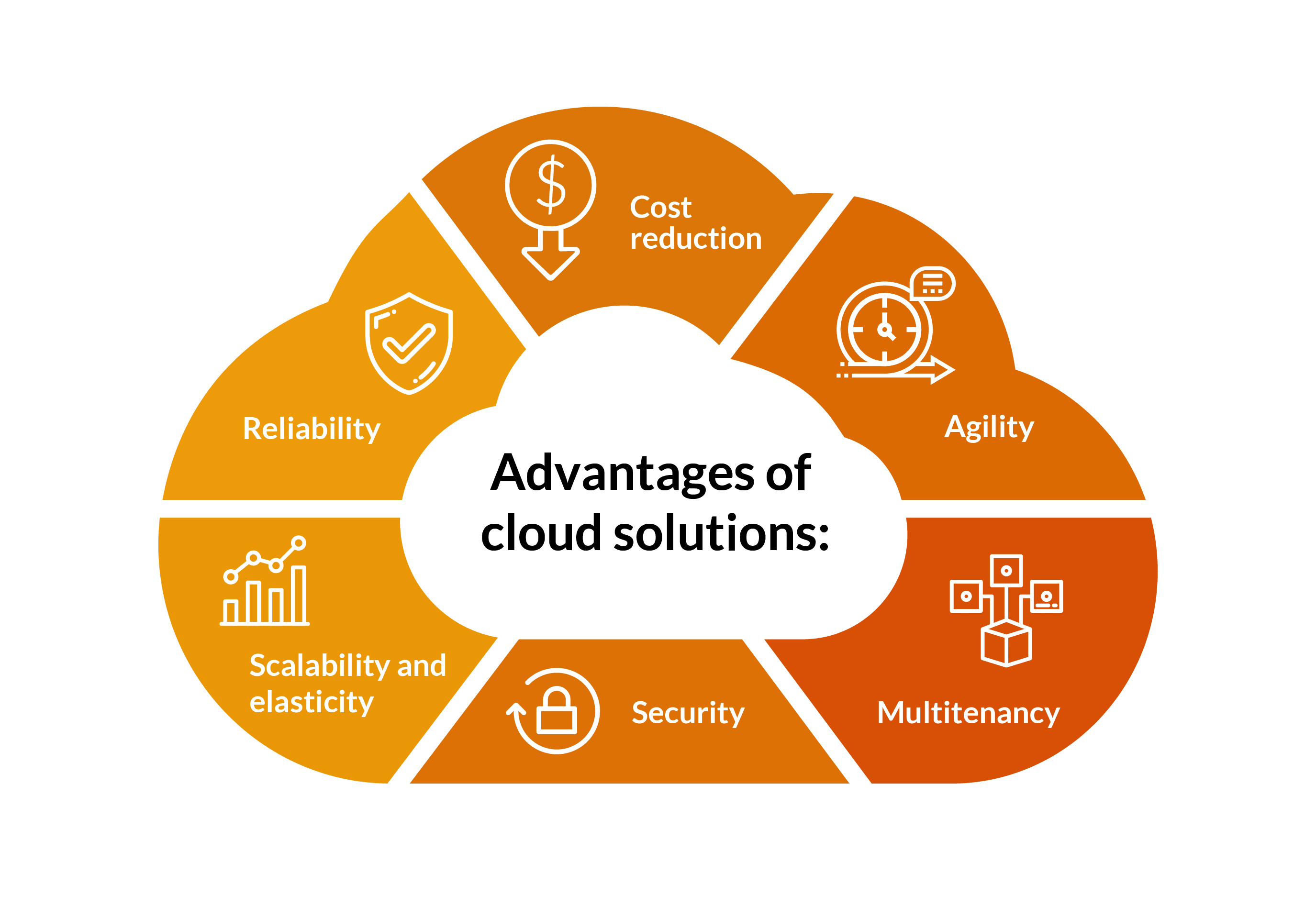Simplify Your Infrastructure With Cloud Services
As organizations navigate the ever-evolving landscape of technology and information administration, the function of cloud services in simplifying infrastructure has actually come to be increasingly noticeable. The appeal of streamlined procedures, enhanced efficiency, and boosted source allotment through cloud options is indisputable. The journey in the direction of an extra dexterous and affordable IT infrastructure entails even more than simply migrating to the cloud. It calls for a calculated approach and a deep understanding of the subtleties of cloud adoption. Just how can services efficiently navigate this change and genuinely unlock the capacity of cloud solutions for simplifying their facilities?
Benefits of Cloud Solutions
Cloud solutions offer a structured strategy to managing IT framework, providing services with cost-efficiency, adaptability, and scalability. One of the essential benefits of cloud services is the scalability they provide. Services can easily scale their sources up or down based upon need, ensuring they only pay for what they use. This flexibility is particularly advantageous for businesses with fluctuating needs or those experiencing development.
Additionally, cloud services remove the requirement for organizations to spend in costly equipment and software application. This cost-efficiency is a considerable advantage, especially for tiny to medium-sized ventures aiming to decrease in advance expenses. By utilizing cloud services, organizations can access premium IT sources without the significant cost tag connected with standard framework configurations.
Furthermore, cloud services give businesses with the versatility to access their data and applications from anywhere with a net connection. This level of availability boosts collaboration among teams, allows remote job, and increases general efficiency. The adaptability supplied by cloud services empowers businesses to adapt rapidly to altering market conditions and client needs.
Expense Financial Savings and Scalability
In enhancement to the functional advantages highlighted previously, the assimilation of cloud solutions right into a business's framework produces considerable price financial savings and boosted scalability. Cloud services offer a pay-as-you-go model, enabling organizations to range sources up or down based upon current demands, thus staying clear of the prices connected with keeping excess ability. This adaptability makes it possible for firms to adjust swiftly to changing demands without incurring unnecessary expenses.
Furthermore, cloud services get rid of the need for upfront financial investments in equipment and software application, reducing resources expenditures. General expenses are also minimized as firms no more need to manage and keep physical servers, resulting in lower power usage and IT staffing costs. In addition, cloud services provide automated updates and maintenance, ensuring that the framework stays safe and updated without requiring hands-on interventions.
Boosted Protection Steps
Executing rigid safety procedures is vital when incorporating cloud services into a company's infrastructure to guarantee and secure sensitive data compliance with market laws. Cloud service companies provide improved safety and security features such as data security, firewall software security, and multi-factor verification to alleviate cybersecurity risks.
Furthermore, normal safety audits and compliance analyses assist determine susceptabilities and ensure adherence to market standards. Business can likewise profit from functions like automated protection updates and real-time risk surveillance supplied by cloud company. By prioritizing safety measures and remaining aggressive in attending to possible dangers, organizations can confidently utilize cloud services while shielding their important information from unauthorized gain access to or breaches.
Transitioning to Cloud Facilities
To efficiently incorporate cloud solutions right into a firm's framework, a structured approach that deals with the shift towards cloud-based services is imperative. Transitioning to cloud facilities includes content cautious planning and execution to guarantee a smooth migration process - universal cloud Service.
Once the assessment is total, a migration method must be created. This approach should outline the timeline, resources, and obligations for moving each component to the cloud. It is vital to interact this plan clearly to all stakeholders to guarantee positioning and reduce disruptions during the transition.
Throughout the movement surveillance, screening and procedure are vital to determine and address any type of issues without delay. Normal checkpoints ought to be developed to track development and make required changes. Furthermore, training for employees on utilizing cloud services must be offered to make sure a successful shift and maximize the advantages of the new facilities.
Best Practices for Cloud Fostering
Effective adoption of cloud solutions hinges on the critical alignment of organization objectives with technical capabilities and business readiness. To make certain a smooth shift to the cloud, organizations need to start by performing an extensive analysis of their present framework and determining which work are best check my blog fit for cloud migration. It is crucial to entail key stakeholders from different departments in the decision-making process to obtain buy-in and address any problems early.
An additional finest method for cloud fostering is to prioritize security and conformity. Organizations should meticulously assess the protection measures used by cloud company and make certain that their data is shielded according to market criteria and regulatory needs. Carrying out durable information encryption, access controls, and regular safety audits can aid reduce dangers linked with cloud fostering.

Conclusion

As organizations navigate the ever-evolving landscape of modern technology and data administration, the duty of cloud services in streamlining infrastructure has actually become significantly prominent - universal cloud Service. Just how can companies effectively browse this transition and truly open the capacity of cloud services for simplifying their framework?
Cloud services supply a structured approach to handling IT infrastructure, offering redirected here businesses with cost-efficiency, adaptability, and scalability. By using cloud services, organizations can access top quality IT sources without the significant rate tag associated with typical infrastructure configurations.
To ensure a smooth change to the cloud, companies must start by performing a thorough assessment of their existing facilities and identifying which workloads are best matched for cloud migration.